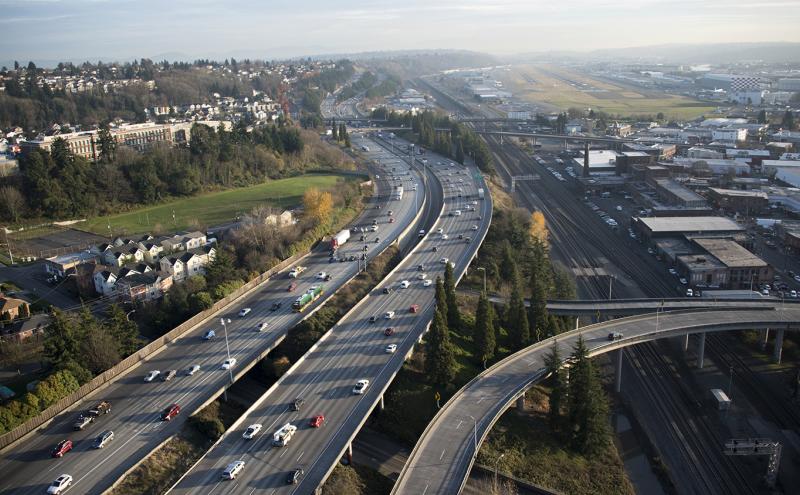
Port of Seattle economic impact
In 2023 the Port of Seattle commissioned reports on the economic impact of all of its maritime and aviation business.
Seattle-Tacoma International Airport economic impact
Seattle-Tacoma International Airport (SEA) is one of the Pacific Northwest’s leading economic engines. From airport workers who live in neighboring communities to cherry farmers in Central Washington, and from shops in tourist destinations like Pike Place Market to corporate giants like Microsoft and Boeing, SEA touches nearly every aspect of the economy.
The Port of Seattle, operator of SEA, retained Community Attributes to measure the airport’s economic contribution based on business activity data collected in 2023. Results demonstrate SEA is a strong driving force for sustainable regional prosperity. Activity on-site at the airport and throughout Washington state resulting from purchases by visitors arriving at SEA generates the following:
- $33.4 billion in total business output
- 174,950 total jobs supported
- $10.5 billion in total employee compensation
- $342 million in total state fiscal impact
Maritime cargo economic impact
The combined total impact of maritime industries was found to include 52,105 jobs and $14 billion in total business revenue. These figures reflect activity at both the Seattle and Tacoma cargo terminals that are managed by The Northwest Seaport Alliance (NWSA).
In 2015 the ports of Seattle and Tacoma joined forces to unify management of our marine cargo facilities and business to strengthen the Puget Sound gateway and attract more marine cargo and jobs for the region. The Northwest Seaport Alliance was the first of its kind in North America.
In 2023 the Northwest Seaport Alliance commissioned a report on the economic impact of marine cargo. The Northwest Seaport Alliance represents one of the largest cargo loading centers in the U.S. In 2023, nearly three million twenty-foot equivalents (TEU) carrying 23.8 million metric tons of cargo (including 22 million metric tons of containerized cargo) were handled at the Northwest Seaport Alliance across facilities at the Ports of Seattle and Tacoma. Nearly 80% of TEUs at the NWSA represent international imports or exports, with the remaining 20% representing containers shipped domestically to Alaska and Hawaii.
The report found that, combined across all marine cargo activities, the NWSA directly an estimated 52,100 jobs, $4.4 billion in total compensation, and $14 billion in total business output throughout the state of Washington. The direct and secondary economic activities related to marine cargo at the NWSA generate nearly $134 million in Washington state sales and use taxes, Washington state business, and occupation taxes and other statewide taxes.
Commercial fishing and recreational boating industries economic impact
The Port of Seattle announced new economic impact report figures on the local fishing and recreational boating industries, highlighting the importance of maritime industrial properties in the region. Commercial fishing facilities on Port property hauled in over $1 billion, supporting over 8,800 direct jobs, with recreational boating related facilities floating nearly $154 million, and more than 1,000 jobs.
Cruise industry economic impact
The results of a new economic impact report show that the Port's projected cruise business for 2025 creates nearly $1.2 billion a year in total local business revenue and supports over 5,120 jobs, with $326.6 million in total compensation (wages and benefits).
In 2024, the Port of Seattle hosted 275 cruise line calls, and is projected to host 300 calls in the 2025 cruise season. From 2014 through 2019, the Port of Seattle averaged 203 cruise ship calls per year, whereas from 2022 to 2024, the average increased to 284 calls. Between 2014 and 2024 total cruise passenger traffic at the Port of Seattle grew by 8% annually, on average.

